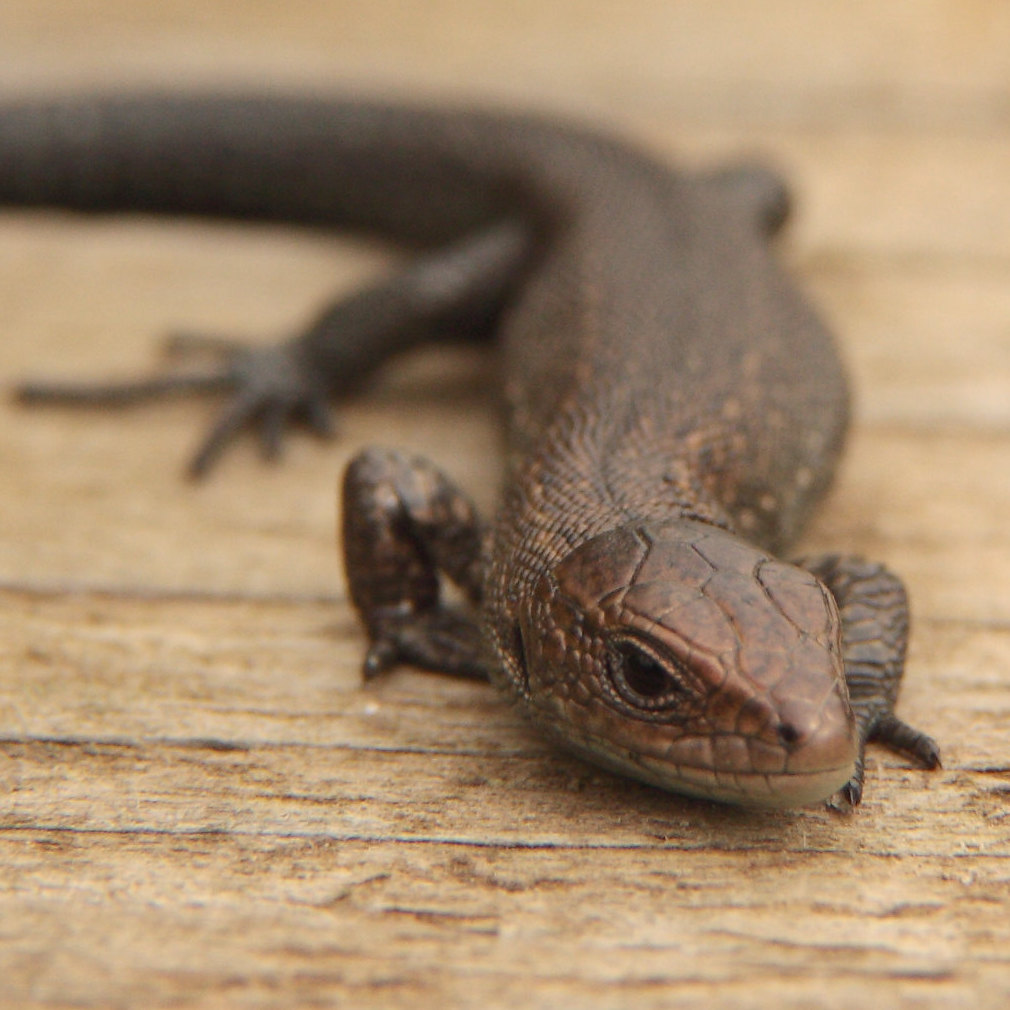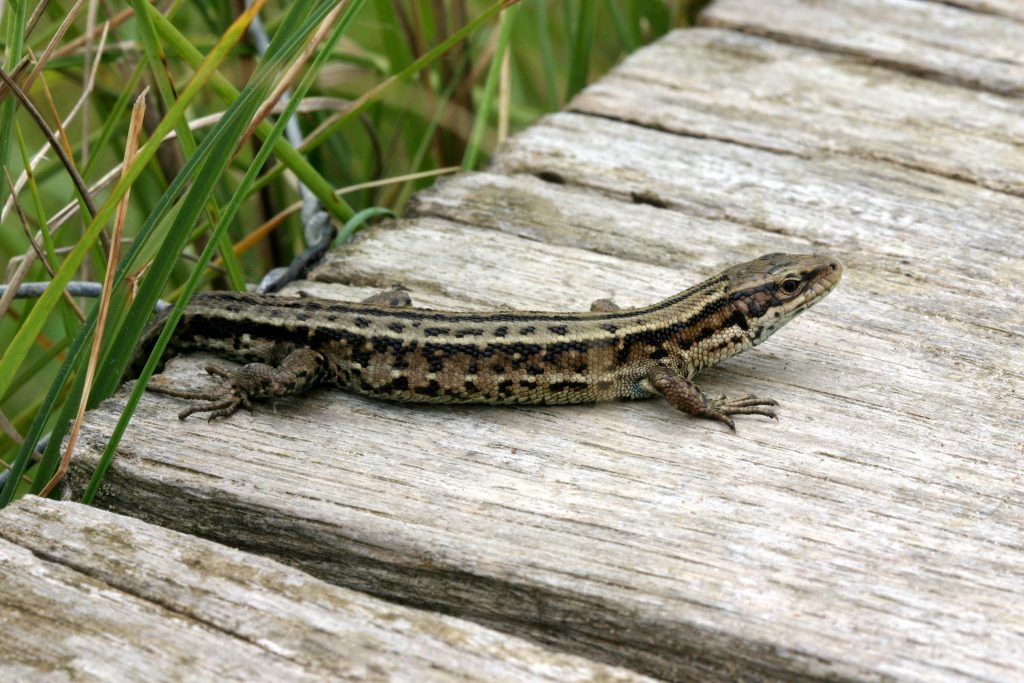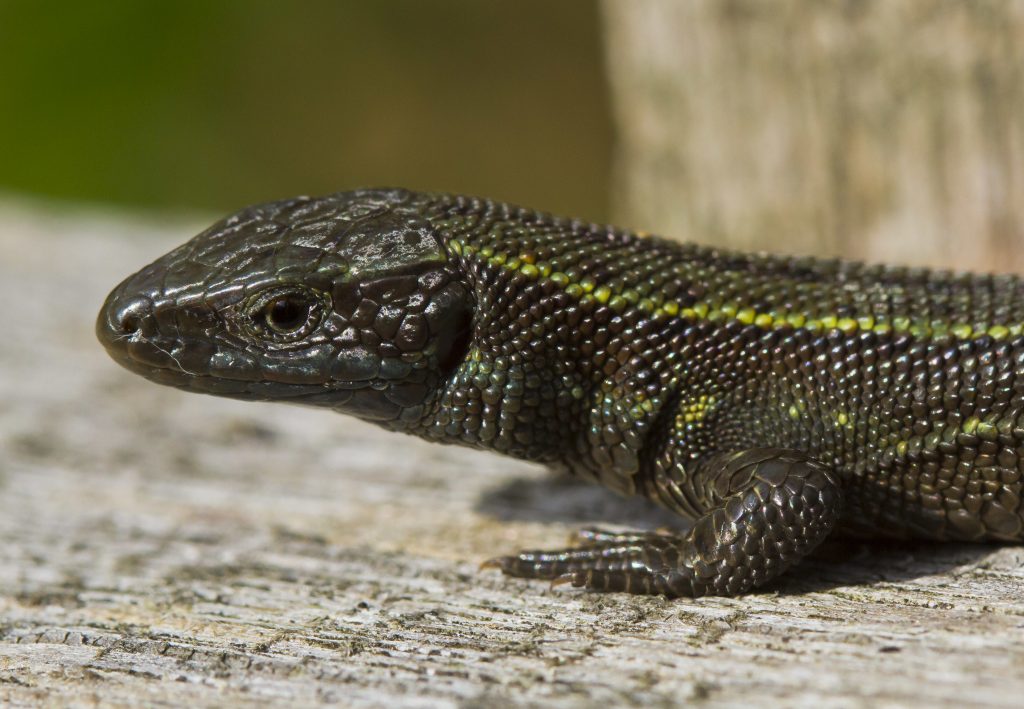
Common Lizards vary quite a bit in colour, from green to brown.
Photo: © Natural England/Paul Lacey
Scientific name: Zootoca vivipara (formerly Lacerta vivipara)
Other names: Viviparous Lizard
Conservation status: Protected in the UK under the Wildlife and Countryside Act 1981; Appendix III of Bern Convention.
What to look for:
- Colouring and appearance: Usually brown-grey, sometimes green or paler brown, with dark markings, often with pale yellowish or white borders, on the sides. Males are bright yellow/orange underneath; occasionally a male has black-spotted red underparts.
- Size: 13 to 15 cm (from tip of tail to nose); the tail is about twice as long as the body.
- Where: Found in a variety of habitats, including woods, meadows and heathland. Look out for them basking in the sunshine on rocks or bare earth.
Common Lizards come in a variety of hues. Most often a grey-brown colour with darker markings, you might also spot paler, black, olive-green or even yellow-coloured individuals. Take a look at the photos below to compare examples of the range of colouration. The skin is of course scaly, one of the key ways to distinguish a lizard from a newt; the latter has a smooth skin.



We think of lizards as laying eggs but, like its relative the Adder, the Common Lizard produces live young in the spring. This isn’t quite the same process as for mammals; the Common Lizard incubates its fertilised eggs internally rather than externally. This is an adaptation to living in cooler climates: some more southerly populations in fact still lay eggs. It is also the reason for its other common name of Viviparous Lizard: viviparous, when applied to animals, means giving birth to live young.
Common Lizards move quickly when disturbed, so the best way to spot them is when they are basking in the sunshine. Their ideal body temperature is 30°C, and early in the morning or on cooler days they will need to take time out from catching their insect prey in order to warm up through basking.
Did you know…?
…The widespread Common Lizard is the only reptile that is native to Ireland. On the other hand, you won’t find it on the Isles of Scilly or the Channel Islands.
…The Common Lizard is the most northerly lizard species, and can be found beyond the Arctic Circle.
More information and references:
Arnold, N. and Ovenden, D., 2002. Reptiles and Amphibians: Britain & Europe (Collins Field Guide), second edition. Collins, London.
Published: June 2015
Author: Amanda Scott
Photos: © Natural England/Allan Drewitt and © Natural England/Paul Lacey
